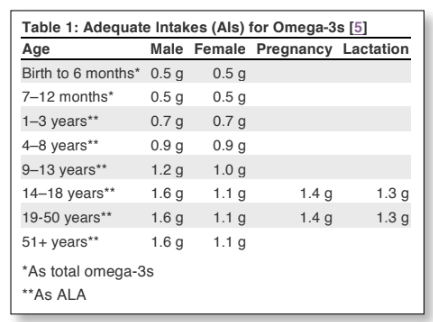BOSTON—Researchers at the Massachusetts Veterans Epidemiology and Research Information Center demonstrated the value of the VA’s ability to harness the health data of thousands or even millions of individuals in a study that calls into question long-held assumptions about the protective benefits of omega-3 polyunsaturated fatty acids in coronary artery disease.
Previous studies have suggested that higher consumption of omega-3 fatty acids—as well as fish, which contain them—is associated with reduced mortality in coronary artery disease. Omega-3 fatty acids (ethyl esters) also reduce low density lipoprotein cholesterol and triglyceride levels.
The MAVERIC team sought to determine whether the apparent reduction in risk also applied to non-fatal CAD and stroke.
To do so, they tapped into the Million Veteran Program, VA’s massive, ongoing nationwide longitudinal cohort study, which includes survey, biospecimen and electronic health record data. The results were published in the Clinical Nutrition Journal.1
For this study, the researchers employed a food frequency questionnaire regarding regular use of omega-3 supplements and frequency of fish consumption. The 197,761 veterans with food frequency data reported weekly consumption of about one 3- to 5-ounce serving of fish, while 21% said they regularly used omega-3 supplements.
With a median follow-up of 2.9 years, 6,265 incident cases of non-fatal CAD occurred. Over a 3.3 year follow-up period, 4,042 of these veterans had an incident nonfatal ischemic stroke.
While omega-3 supplementation appeared to reduce the risk of nonfatal ischemic stroke by 12%, it did not reduce the risk of non-fatal CAD. Even at five servings per week, fish consumption did not significantly reduce the risk of non-fatal CAD or non-fatal ischemic stroke, according to the results.
Some Protective Effect
As increased consumption of fish has been touted as a good way to protect the heart and reduce mortality, the finding that eating fish almost every day did not reduce nonfatal CAD events or stroke runs counter to the conventional wisdom, particularly when omega-3 supplementation appeared to have some protective effect.
The study results came with some caveats, however.
“Our findings were observational,” said Rachel Ward, PhD, MPH, an epidemiologist an assistant scientific director of MAVERIC. “Trials are needed to confirm the levels and types of omega-3 fatty acid needed to minimize risk of non-fatal events.”
The VA finding might support results seen in another study, she noted. “Current trial data are limited but REDUCE-IT showed that one particular omega-3 fatty acid is quite protective.”

A highly purified form of eicosapentaenoic acid ethyl ester, an omega-3 fatty acid, icosapent ethyl was compared to a mineral oil containing placebo in the Phase III REDUCE-IT trial. The trial showed a 20% reduction in the risk of cardiovascular death in patients with high triglyceride levels despite the use of statins with 2g of icosapent ethyl twice a day.
Notably, in light of the VA study, REDUCE-IT also demonstrated a 30% reduction in nonfatal myocardial infarction and 29% reduction in nonfatal stroke. The risk of both coronary revascularization and hospitalization for unstable angina also dropped by about one-third.
“The key may be both dose and the specific type of omega-3 fatty acid” consumed, Ward told U.S. Medicine.
Regarding the findings that fish consumption did not reduce the risk of nonfatal CVD or stroke in the VA study, Michael Gaziano, MD, principal investigator of the Million Veteran Program offered another explanation. “Our study suggests levels of omega-3 fatty acid consumed from fish within our study population may not have been sufficient to affect non-fatal cardiovascular events,” he said.
Since 2010, the U.S. Department of Agriculture Dietary Guidelines for Americans have recommended consumption of at least eight ounces of seafood weekly to achieve an average weekly consumption of 1750 mg of two omega-3 fatty acids, eicosapentaenoic acid and docosahexaenoic acid. Fish high in these omega-3 acids are salmon, mackerel, sardines, anchovies, trout and tuna.
Since 2002, the American Heart Association has recommended consumption of fatty fish at least twice a week for CVD prevention and daily consumption for individuals with established CVD.
While some observational studies and clinical trials have shown an inverse relationship between fish intake and cardiovascular mortality, others have not.
A recent Dutch study also suggested limited benefit to fish consumption. That study included 30,033 participants. Over an 18-year follow-up period, the researchers found a median intake of fish far higher than the VA study, as expected given the traditional diet of the country. The 92% of participants who consumed any fish had median intake of 57.9 g of total fish, 32.9 g of lean fish and 10.7 g of fatty fish per week. 2
The study determined that consuming less than one portion of fish of any type per week had no association with any CVD outcome compared to non-consumption. In addition, consuming more than one serving per week had no impact on CVD mortality, hemorrhagic stroke, myocardial infarction or coronary heart disease.
As with the VA study, the Dutch research also found that individuals who ate at least one portion per week of fish had a lower incidence of ischemic stroke. Lean fish reduced the risk of ischemic stroke 30% and fatty fish reduced it 37%.
1 Ward RE, Cho K, Nguyen XT, Vassy JL, HO YL, Quaden RM, Gagnon DR, Wilson PWF, Gaziaziano JM, Djousse L, VA Million Veterans Program. Omega-3 supplement use, fish intake, and risk of non-fatal coronary artery disease and ischemic stroke in the Million Veteran Program. Clin Nutr. 2019 Mar 13. Pii: SO261-5614(19)30118-9.
2 Hengeveld LM, Praagman J, Beulens JWJ, Brouwer IA, van der Schouw YT, Sluijs I. Fish consumption and risk of stroke, coronary heart disease, and cardiovascular mortality in a Dutch population with low fish intake. Euro J of Clin Nutr. 2018; 72:942-950.


